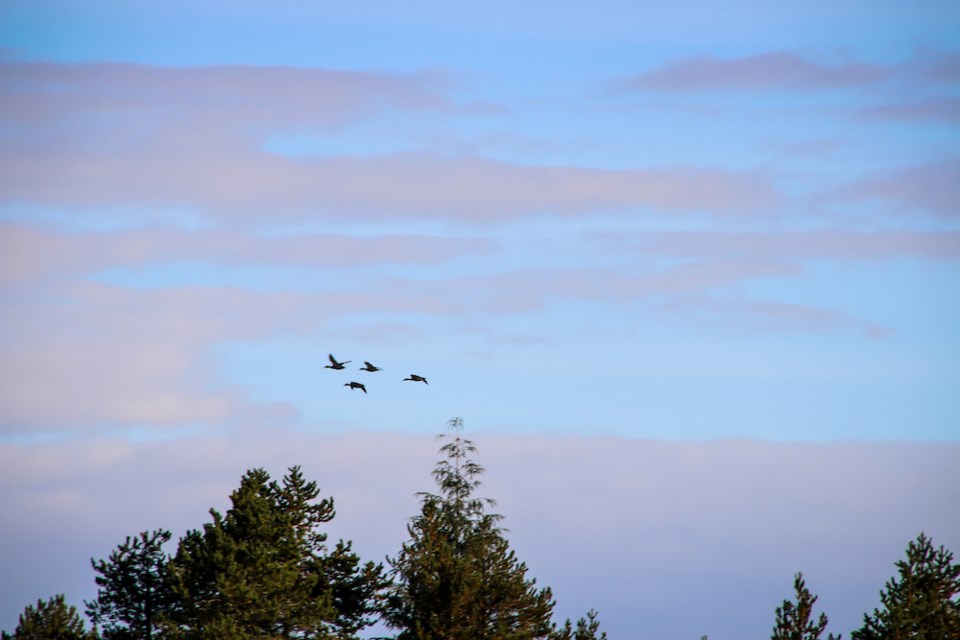The dog days of August are upon us, and birdlife can be hard to find. Last week I hiked the entire trail system at Smuggler’s Cove Provincial Park and barely heard a peep from a bird, whereas a similar hike in May would produce a non-stop cacophony of 30 plus species. Where have all these forest birds gone? A good question as they say when the answer is uncertain! Theoretically, there should be a maximum number of birds around at this time of the year as the population spikes after springtime breeding. However, because birds are silent at this time of the year, they are much harder to detect. Also, they may still be active very early in the morning to avoid the heat of the day, and some birds will have already begun to move southward back to their winter haunts. Some species also move altitudinally in late summer to utilize available food resources. Among these are rufous hummingbirds that move upward into the fireweed meadows of regenerating clearcuts, and band-tailed pigeons that feast on elderberries in mid-elevation clearcuts.
Even though the forest insectivores go quiet, the low-elevation seed-eating species are still evident, and flocks of goldfinches are common and house finches still chatter. One species that becomes more evident in August is Steller’s jay as they return from nesting in the forest to resume their noisy patrols of bird feeders. On warm evenings as dusk approaches, nighthawks, sometimes in loose flocks, may still be seen and heard as they zig-zag across the sky. They will soon leave on their long migration to the Amazon.
Despite the perching/songbirds becoming harder to find, August is peak season for migrating shorebirds, and the mudflats at Porpoise Bay and the Wilson Creek estuary are a hive of activity. Many species of shorebirds nest in the Arctic or the boreal forest and winter on the shorelines of California, the Caribbean and Central and South America. Right now, species such as western, least and semipalmated sandpipers, greater and lesser yellowlegs, dowitchers, plovers, and others are in transit through our area. Birders are ever alert for potential rarities that may occur.
The Salish Sea and its environs host huge numbers of ducks and waterbirds in the winter and the first returnees are just now appearing, with reports of green-winged teal, pintail and American wigeon in Porpoise Bay. The sea-ducks such as the scoters and goldeneyes will appear much later when the interior lakes begin to freeze.
To report your sightings or questions contact me at [email protected] or 885-5539. Good Birding.



